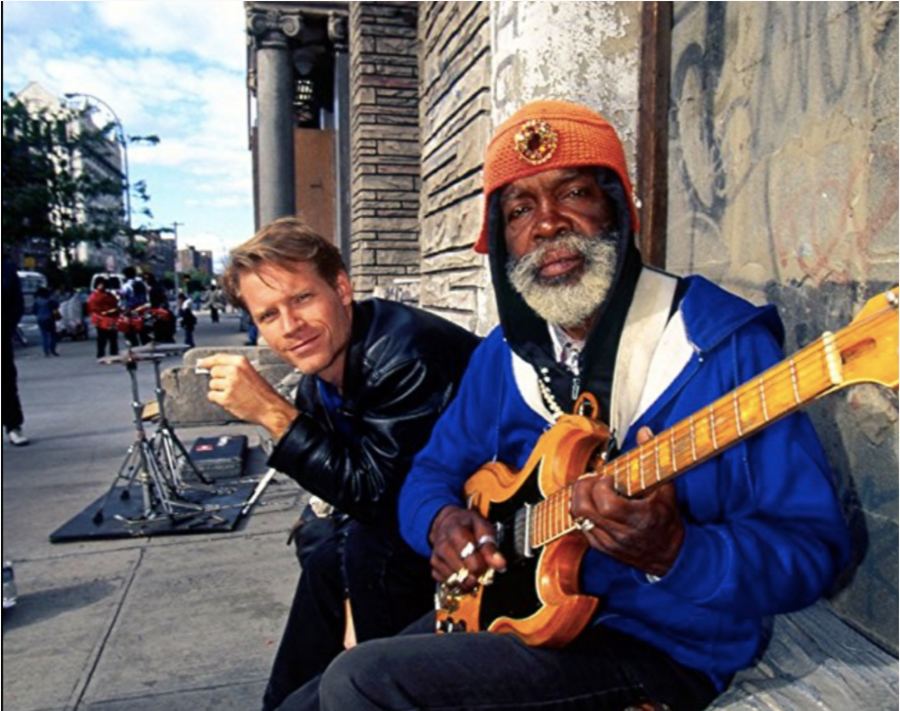Satan and Adam. The biblical allusion is too obvious to ignore. The juxtaposition suggests diametrically opposed morals, a polarity of virtue, but this could not be further from the truth. The titular pair — Sterling Magee, aka Mr. Satan, and Adam Gussow — are indeed antithetical in their upbringings and lived experiences, but their love for music, and specifically for blues, supersedes all that. These two men are motivated, foundationally and exclusively, by the very same passion.
However, viewers don’t know this from the outset. We don’t know the transcendental power of blues and its ability to reach beyond racial and class lines to connect people. Our innate skepticism takes hold, and through this lens, the account of Mr. Satan and Adam’s first meeting appears to be a case of white cultural vagrancy.
Adam is a Columbia University graduate student looking to remedy a heartbreak. He visits Harlem one afternoon and comes across an absolutely magnetic street musician. It’s Sterling Magee, the self-proclaimed Prince of Darkness, commanding his throne — a polyamorous musical setup including hi-hats, a guitar and his killer voice. Adam, with a degree of ignorance surprising coming from an Ivy-educated man. returns the next day, harmonica in hand, and asks to sit in with Mr. Satan. Adam “Promises not to embarrass him” and, rather open-mindedly, Mr. Satan lets him play.
An indubitably rare sight, the duo draws a crowd. And every subsequent day, the numbers grow. They soon get noticed by producers and agents, and before long, Mr. Satan and Adam leave their sidewalk stage to cut studio records and play music festivals.
Like today, the late ’80s was a tumultuous time for race relations. Given this, Adam’s initial request seems much like an intrusion, an exercise in entitlement. It isn’t until you actually hear their music that your distrust slowly falls away, and you begin to realize just how symbiotic Mr. Satan and Adam’s relationship is. They play off of each other’s energies, creating the beautiful and indescribable with each and every riff. Together, their music is more powerful than anything either could have dreamed of producing on his own.
Though the film’s cultural context feels a bit spoon-fed at times, “Satan & Adam” doesn’t pretend to be some fantastical tale of racial harmony. Director V. Scott Balcerek captures not an interracial friendship, but a friendship, in all its complexity. The film spans multiple years, showing us the universally devastating realities of infirmity. Mr. Satan suffers a stroke, Adam a heart attack. Mr. Satan loses mobility in his fingers, and with it, his ability to play. It’s a momentous loss, a tragedy beyond words. The chapter seems to close on blues, but wonderfully stubborn as they are, Mr. Satan and Adam will not go out with a whimper. They’ll continue to play, regardless of their ability, for it’s their spiritual necessity. “Satan & Adam” understands that music isn’t some magic bullet, but it reminds us that there exists more to unify than to divide.
A version of this article appears in the Monday, April 15, 2019, print edition. Email Elizabeth Crawford at [email protected].























































































































































